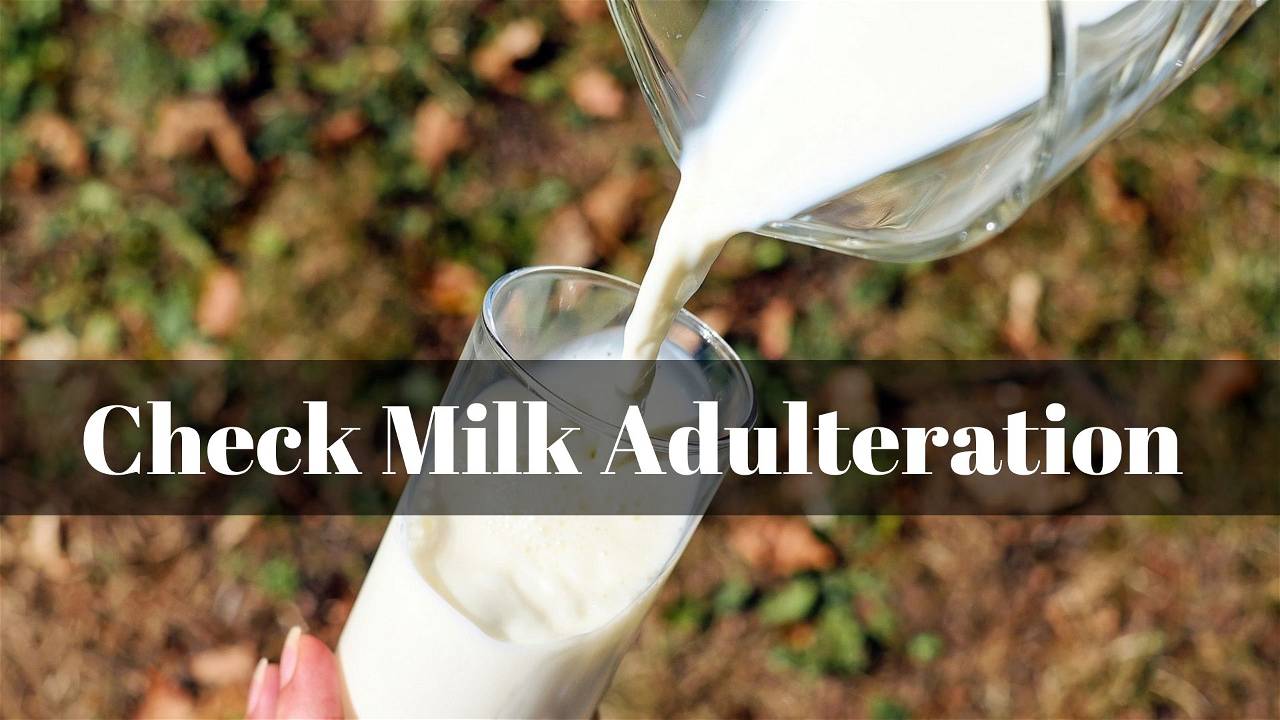
Milk is an essential source of nutrition enjoyed by people of all ages worldwide. It is a rich source of calcium, protein, and other essential vitamins and minerals. Milk is also a great source of energy and helps keep the body hydrated. In addition to its nutritional benefits, milk is also used in a wide variety of culinary applications, from making cheese and yogurt to baking and cooking.
The global population continues to grow steadily, posing challenges for ensuring sufficient supply and maintaining optimal quality of milk for everyone. Milk, being highly perishable, needs to be consumed within a specific timeframe or preserved using suitable methods to prevent spoilage. However, with increasing demand, fraudulent practices like milk adulteration are also on the rise, exacerbating concerns about product integrity and consumer safety.
What is Milk Adulteration?
Adulteration is a deliberate process that degrades the quality of milk. Unlike contamination, which is unintentional and often due to mishandling, adulteration involves adding substances to milk to increase its quantity or alter its properties for financial gain. This can lead to serious health implications for both children and adults. Understanding how to identify adulterated milk is crucial to protect your health and that of your family.
Common Adulterants and Their Impact
Various substances are commonly used to adulterate milk. Each of these adulterants can have harmful health effects:
|
Adulterant |
Impact |
|
Water |
Added to increase volume, water reduces milk's nutritional value. If contaminated, it can cause diseases like typhoid and cholera. |
|
Detergent |
Enhances thickness and viscosity. It can cause nausea, diarrhea, and irritation to the skin and eyes. |
|
Synthetic Milk |
Increases volume. It poses risks to the heart, kidneys, and liver. |
|
Starch |
Prevents curdling and increases thickness. It can cause diarrhea and be particularly harmful to diabetic patients. |
|
Urea |
Increases thickness and protein concentration. It can lead to gastritis, vomiting, and affect the kidneys, heart, and liver. |
|
Hydrogen Peroxide |
Prevents bacterial growth and extends shelf life. It can cause gastritis and inflammation of the intestine. |
|
Melamine |
Raises nitrogen and protein content. It can cause bladder stones and kidney failure. |
Oxytocin Injection |
Increases milk production in cows. It can lead to heart and kidney disease, hormone imbalance, and other health issues. |
|
Formalin |
Extends shelf life. It can cause corrosion of intestines, skin and eye diseases, and cancer. |
|
Ammonium Sulphate |
Balances density. It may cause vomiting, diarrhoea, and nausea. |
How To Test Milk Purity at Home
Given the harmful effects of adulterated milk, it is essential to know how to test its purity at home. Here are a few easy ways to detect common adulterants:
-
Water Test: Place a drop of milk on a clean, flat surface. Observe its behavior; if the milk flows without leaving a white trail, it likely contains water. Pure milk will leave a distinct white trail due to its higher density and fat content.
-
Starch Test: Add a few drops of iodine solution to a small milk sample. If the mixture turns blue, starch has been added to thicken the milk. Pure milk will not change color, as it does not contain starch or Taste a few drops, If it has a bitter taste, it may be synthetic.
-
Detergent Test: Mix 10-15 ml of milk with an equal amount of water in a container. Shake well. If a dense lather forms, it indicates the presence of detergent, which is sometimes added to milk to increase its foaming capacity. Pure milk will produce only a thin layer of foam.
-
Synthetic Milk Test: Rub a few drops of milk between your fingers. If it feels soapy or slippery, it might contain synthetic substances used to mimic the texture of real milk. Pure milk will feel smooth and not soapy.
-
Urea Test: Add soybean powder to a few drops of milk in a tube and shake. Insert a red litmus paper. A blue color indicates the presence of urea, an adulterant used to increase the nitrogen content. Pure milk will not change color in this test.
-
Sugar Test: Add a few drops of hydrochloric acid to a milk sample and shake well. If the solution turns red, it suggests added sugar, which is sometimes used to increase sweetness. Pure milk will not exhibit this color change.
-
Salt Test: Mix a small amount of milk with a few drops of silver nitrate solution and some water. A white precipitate indicates the presence of added salt, which is sometimes used to preserve milk. Pure milk will remain clear without forming a precipitate.
-
Vanaspati Test: Combine 10 ml of hydrochloric acid with 10 ml of milk, then add 1 teaspoon of sugar and shake for 1 minute. After 5 minutes, if a red color appears, it indicates the presence of vanaspati (hydrogenated vegetable oil), used as an adulterant to mimic milk fat. Pure milk will not change color.
Milk is vital for daily life, supporting good health and well-being. Ensuring the milk we consume is pure and free from adulterants is essential. Adulteration, a deliberate process, significantly compromises milk quality and poses serious health risks for both children and adults.
It is very important to know how to do a milk purity test. The presence of water, detergent, starch, artificial milk, urea, and other substances can all be indicators of adulterated milk. By using these simple home tests, you can ensure that the milk you consume is safe and pure, protecting your health and that of your loved ones.
















